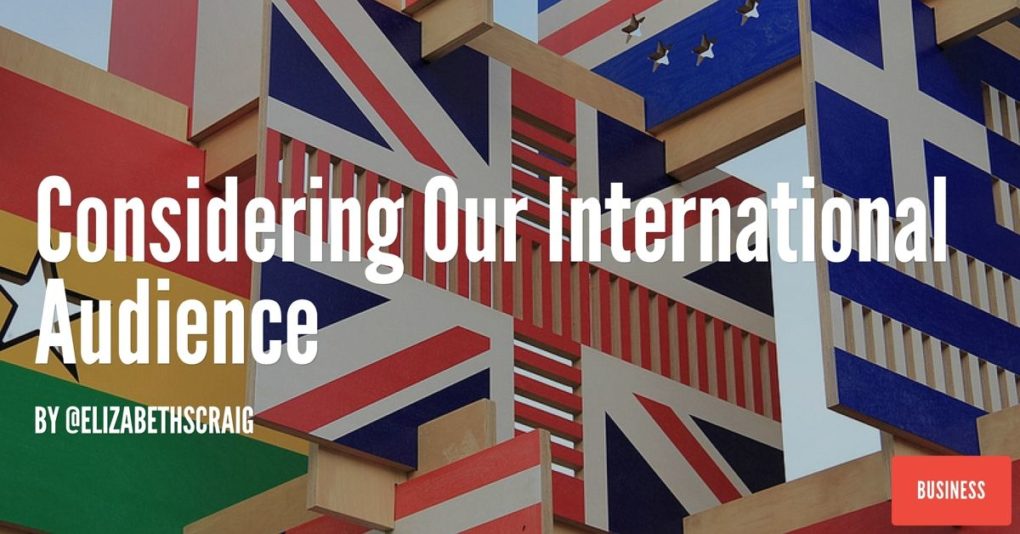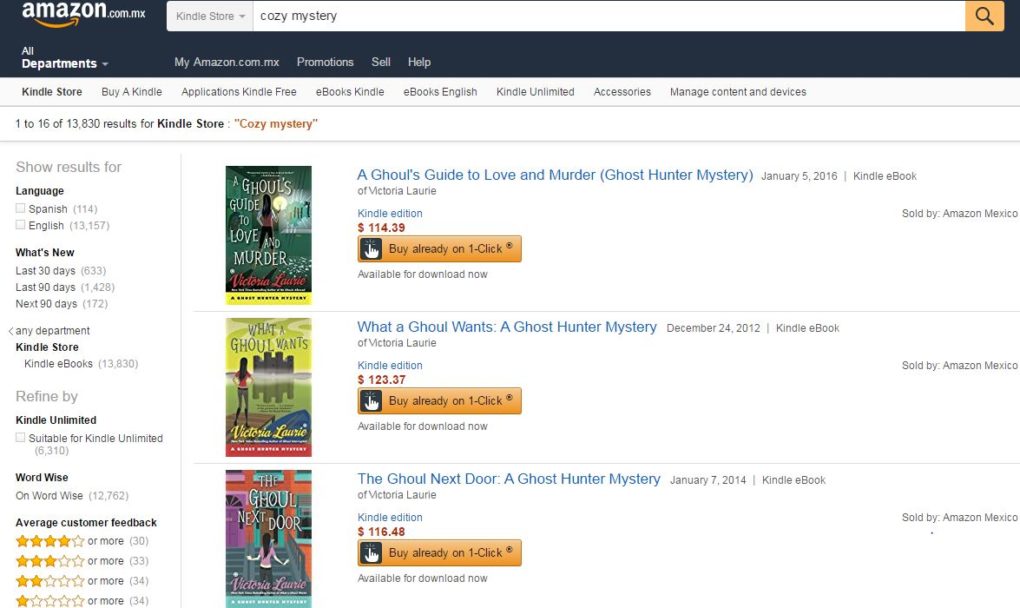
by Elizabeth S. Craig, @elizabethscraig
Are your books available to an international audience? I’ve found that my international sales have picked up after I implemented a few tweaks.
First off, do you have an Amazon Author Central profile on the international sites that support them? Be aware that, depending on the site, you may need to create a new login (instead of using your usual Amazon login), and that some sites don’t have all the features that others do. You can use Google Translate to help you with a bio, etc. (my recommendation would be to go very basic with it) or you could pay a translator at a site like Fiverr to have your bio inexpensively translated.
Amazon India also has an Author Central, but our profile populates automatically there.
Here is the list of international Amazon sites (not all of them offer Author Central):
- Brazil
- Canada
- China
- France
- Germany
- India
- Italy
- Japan
- Mexico
- Netherlands
- Spain
- United Kingdom
- United States
Visiting the sites can be very helpful, in terms of figuring out our international pricing. Let’s take Mexico as an example. I visited the Amazon Mexico site (translating the page to English with a click of my mouse), and searched for my genre, cozy mystery, in the Kindle store. I sorted the results by popularity and could see that the most popular in that category were priced between 114–$123 peso. According to Google’s currency calculator, that’s between $6.04 and $6.51 US dollars. For me, that’s a bit high. I also saw on that page books as low as 0.00 and 38.41 peso, which is $2.03. Better.
So, instead of just basing the international prices on our US prices, we can look on the sites, see which books are selling well, and price accordingly (or at least use it as a guide).
Another thing to consider is our international print distribution. Although Amazon does a great job distributing ebooks to foreign markets, it’s good to evaluate our approach for print distribution. Printed books are expensive overseas because the shipping costs are exorbitant.
One alternative is to use IngramSpark to fulfill international print orders. They have printers all over the world and distributing print on demand from these printers helps to defray the readers’ shipping costs. As David Penny wrote in his article for the Alliance of Independent Authors a year ago:
Ingram has facilities in the US, UK, France and Australia, and services other territories through partner arrangements. As of 2015 there are partners in Germany, Russia, Poland, Brazil and South Korea. By the end of 2016 they will be putting in place partner arrangements in South America, South Africa, China and India.
You can use the same interior and cover PDFs you uploaded to CreateSpace to upload to IngramSpark, but because there are some differences between the two businesses, you may need to get your spine tweaked (I believe there is a difference in page thickness). If you go this route, you’ll want to opt out of expanded distribution at CreateSpace. Additionally, you’ll need an ISBN for your book to be published by Ingram (not the free one that you may get from CreateSpace). There is, as well, a set-up fee for IngramSpark of $49 a book, although there are frequently coupons to reduce or waive that cost.
Personally, I’ve found going on IngramSpark worth it. Last month I netted twice as much from them as from CreateSpace.
Additional reading and resources:
A Facebook group called The International Indie Author, headed by writer Mark Williams. You will need to ask permission to join.
I’ve referred to this article by Giacomo Giammetteo before, but it’s such an excellent overview of CreateSpace vs. IngramSpark that I’ll list it again: Watchdog: Ingram Spark vs CreateSpace for Self-publishing Print Books .
Have you got Author Central profiles for the different international Amazon sites? How do your international print sales look? Any tips that I’m missing?
Tips for expanding our international audience: Click To TweetPhoto credit: Karen Roe via Visualhunt.com / CC BY

